gtoast99
Sr. Member
Hey everyone! This is going to be kind of (REALLY) long, so my apologies in advance ha-ha.
I got out to a spot with my best friend and hunting partner Dustin the other day for a combined "birthday hunt". It was his birthday, and mine was a few days before. This is one of the many union winter camps from early 1863, following the disastrous battle of Fredericksburg and mud march. Being a dug in winter camp, we were on the lookout for signs of huts and firepit - and they were all over in there.
We dug out several with moderate to low success, picking out a few surface finds between. It was the last one of the day that proved to be the winner though. Besides nails and animal bone, the hut included a couple of bullets, heavily corroded buttons, grommets, and rivets. Although the buttons were in bad shape, the ground conditions were right to preserve some leather and canvas on the hardware, as well as uniform cloth on the back of several buttons.
When I uncovered the neck and shoulder of a bottle, and thought it had a real possibility of being whole, I called over Dustin. He'd never dug out a whole bottle before, and this little round medicine proved to be his first. The second bottle from the hole actually came out in a scoop of dirt! I have no clue how we didn't accidentally break that second medicine, but I'm glad we didn't. Its embossed "Dr. Seth Arnold's Balsam", and was used to treat dysentery and other related conditions.
The best find, though, was actually one of the first things out of the hut. This is a vulcanized rubber comb made by Goodyear's. These pocket combs served for general grooming purposes, but were especially important in dealing with the epidemic of lice found in the extremely poor conditions in these camps, which has been well documented.
Not long out of the hole, though, I could see this comb had a story to tell - the soldier who had it carved his initials!! It reads....
H.N.F. = BAND
To try and track down who this might be, I first compiled a list of all soldiers with the names H. Band or H. Rand. As it turns out, I could easily rule out all of them. Some were in regiments that mustered in too late or out to early, many had the wrong middle initials, and others were in the wrong theater of war altogether.
So the conclusion was made that the initials are HNF, and BAND is the company designation, ie the Regimental Band. With only the three initials, I had to narrow down the field.
I started with a list of all soldiers with rank of musician or drummer. From there I could eliminate cavalry and artillery, anyone in the wrong theater, wrong middle initials, and regiments with impossible muster dates.
I could help to narrow down the unit present by state buttons found in this camp previously - in this case, New York and Maine. This would give me a clue, but I didn't want to rule out other states just yet.
Last but not least, was the location of the camp itself. Without going into too much detail, I knew what army corps the camp belonged to from its location. Applying all of these filters left me with just ONE name. And it turns out it was a match with the Maine state seal button found there earlier this year.
Henry Nathaniel Fairbanks, Musician 3rd Class, 3rd Maine Infantry.
I have since found one other piece of information that adds to the 3rd Maine ID, but to protect the site location you'll have to take my word for it. Now I did learn that Henry N Fairbanks returned home prior to this winter camp on disability leave. So the assumption here is that the comb was borrowed (with or without permission), traded, sold, or given to someone else in the regiment. But the fact that only one name for the entire corps matches all the details (all three initials, rank/regimental band, state of origin, corps/location of camp) is a pretty solid ID in my book.
Trust me, I was very thorough in coming to this conclusion. Nothing in detecting is ever completely certain, but I'm as sure as I can be we have the correct ID. I even went back through EVERY individual soldier entry for H.F. from New York and Maine one by one to make sure I hadn't missed any possible musician ranks. Still only the one result matched - Henry N. Fairbanks.
After his disability leave, Henry reenlisted later in 63 in the 44th Massachusetts, and again in November joined the 30th Maine. Although wounded, he survived the war. After the war he married, and had three children (interestingly enough naming one of them Philip Sheridan Fairbanks). Henry was a businessman and politician in Bangor, ME, including serving as representative to the Maine state legislature. He was very active in the Maine historical society and GAR. His post-war image is attached as well.
EDIT: found a war era photo of him as well, check page 3
I got out to a spot with my best friend and hunting partner Dustin the other day for a combined "birthday hunt". It was his birthday, and mine was a few days before. This is one of the many union winter camps from early 1863, following the disastrous battle of Fredericksburg and mud march. Being a dug in winter camp, we were on the lookout for signs of huts and firepit - and they were all over in there.
We dug out several with moderate to low success, picking out a few surface finds between. It was the last one of the day that proved to be the winner though. Besides nails and animal bone, the hut included a couple of bullets, heavily corroded buttons, grommets, and rivets. Although the buttons were in bad shape, the ground conditions were right to preserve some leather and canvas on the hardware, as well as uniform cloth on the back of several buttons.
When I uncovered the neck and shoulder of a bottle, and thought it had a real possibility of being whole, I called over Dustin. He'd never dug out a whole bottle before, and this little round medicine proved to be his first. The second bottle from the hole actually came out in a scoop of dirt! I have no clue how we didn't accidentally break that second medicine, but I'm glad we didn't. Its embossed "Dr. Seth Arnold's Balsam", and was used to treat dysentery and other related conditions.
The best find, though, was actually one of the first things out of the hut. This is a vulcanized rubber comb made by Goodyear's. These pocket combs served for general grooming purposes, but were especially important in dealing with the epidemic of lice found in the extremely poor conditions in these camps, which has been well documented.
Not long out of the hole, though, I could see this comb had a story to tell - the soldier who had it carved his initials!! It reads....
H.N.F. = BAND
To try and track down who this might be, I first compiled a list of all soldiers with the names H. Band or H. Rand. As it turns out, I could easily rule out all of them. Some were in regiments that mustered in too late or out to early, many had the wrong middle initials, and others were in the wrong theater of war altogether.
So the conclusion was made that the initials are HNF, and BAND is the company designation, ie the Regimental Band. With only the three initials, I had to narrow down the field.
I started with a list of all soldiers with rank of musician or drummer. From there I could eliminate cavalry and artillery, anyone in the wrong theater, wrong middle initials, and regiments with impossible muster dates.
I could help to narrow down the unit present by state buttons found in this camp previously - in this case, New York and Maine. This would give me a clue, but I didn't want to rule out other states just yet.
Last but not least, was the location of the camp itself. Without going into too much detail, I knew what army corps the camp belonged to from its location. Applying all of these filters left me with just ONE name. And it turns out it was a match with the Maine state seal button found there earlier this year.
Henry Nathaniel Fairbanks, Musician 3rd Class, 3rd Maine Infantry.
I have since found one other piece of information that adds to the 3rd Maine ID, but to protect the site location you'll have to take my word for it. Now I did learn that Henry N Fairbanks returned home prior to this winter camp on disability leave. So the assumption here is that the comb was borrowed (with or without permission), traded, sold, or given to someone else in the regiment. But the fact that only one name for the entire corps matches all the details (all three initials, rank/regimental band, state of origin, corps/location of camp) is a pretty solid ID in my book.
Trust me, I was very thorough in coming to this conclusion. Nothing in detecting is ever completely certain, but I'm as sure as I can be we have the correct ID. I even went back through EVERY individual soldier entry for H.F. from New York and Maine one by one to make sure I hadn't missed any possible musician ranks. Still only the one result matched - Henry N. Fairbanks.
After his disability leave, Henry reenlisted later in 63 in the 44th Massachusetts, and again in November joined the 30th Maine. Although wounded, he survived the war. After the war he married, and had three children (interestingly enough naming one of them Philip Sheridan Fairbanks). Henry was a businessman and politician in Bangor, ME, including serving as representative to the Maine state legislature. He was very active in the Maine historical society and GAR. His post-war image is attached as well.
EDIT: found a war era photo of him as well, check page 3
Amazon Forum Fav 👍
Attachments
-
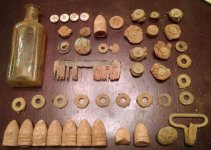 14317561_10103815137061568_5752760119575524275_n.jpg96.7 KB · Views: 222
14317561_10103815137061568_5752760119575524275_n.jpg96.7 KB · Views: 222 -
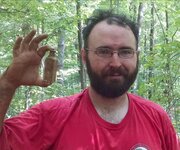 IMG_20160919_185905.jpg439.4 KB · Views: 213
IMG_20160919_185905.jpg439.4 KB · Views: 213 -
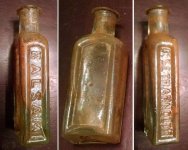 14344283_10103815137041608_474878801168012846_n.jpg72.8 KB · Views: 208
14344283_10103815137041608_474878801168012846_n.jpg72.8 KB · Views: 208 -
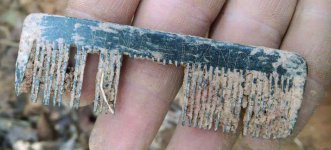 14305203_10103815137051588_5417207148117707987_o.jpg60.4 KB · Views: 226
14305203_10103815137051588_5417207148117707987_o.jpg60.4 KB · Views: 226 -
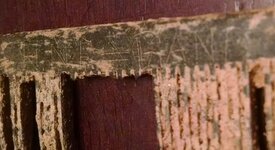 IMG_20160920_221210.jpg293.5 KB · Views: 242
IMG_20160920_221210.jpg293.5 KB · Views: 242 -
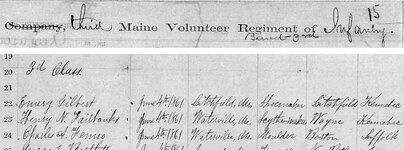 canvas4 copy.jpg121.1 KB · Views: 231
canvas4 copy.jpg121.1 KB · Views: 231 -
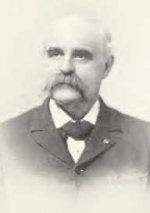 b1bd8093-0331-4f6f-a887-d4312a48c707.jpg3.3 KB · Views: 814
b1bd8093-0331-4f6f-a887-d4312a48c707.jpg3.3 KB · Views: 814
Last edited:
Upvote
43







